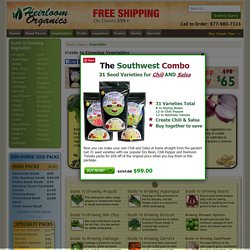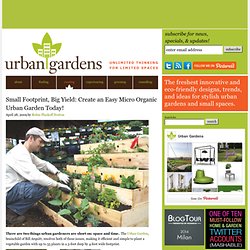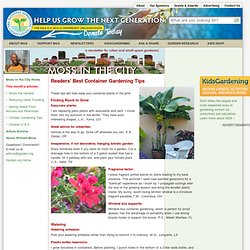

Guide to Growing Vegetables. Some general considerations for growing vegetables: Sowing Tips When sowing seeds, a good general rule of thumb is to sow to a depth of approximately twice the thickness of the seed.

Some smaller seeds require light to germinate and should not be sown too deep; otherwise they may never germinate or break through the surface of the soil. Conversely, large seeds planted too shallow may not develop properly. Keep seeds well-moistened while awaiting germination and check regularly. Select a light-weight, well-drained medium for sowing to ensure good seed to soil contact. Growing Tips Most vegetables will produce better results if sown and grown in a soil-medium that is well-drained, rich in organic matter (fertile), and fairly lightweight. Most vegetables will prefer good quantities of natural, direct sunlight daily.
Harvesting and Seed Saving Many vegetables will be harvested in the fall, especially if grown in lower hardiness zones. Weatherbase. Garden Layout Ideas" Small Footprint, Big Yield: Create an Easy Micro Organic Urban Garden Today! April 28, 2009 by Robin Plaskoff Horton There are two things urban gardeners are short on: space and time.

The Urban Garden, brainchild of Bill Arquitt, resolves both of these issues, making it efficient and simple to plant a vegetable garden with up to 55 plants in a 3-foot deep by 4-foot wide footprint. Small veggie plots, big rewards. Moss in the City. These tips will help keep your container plants in the pink.

Finding Room to Grow Easy-care plants: I am replacing patio plants with succulents and cacti. I move them into my sunroom in the winter. They have such interesting shapes. Great advice for urbanites: Vertical is the way to go. Inexpensive, if not decorative, hanging tomato garden: Enjoy tomatoes even if you have no room for a garden.
Fragrance factor: I place fragrant potted plants on stairs leading to my back entrance. Window box supports: When to Plant Vegetables. Preplanned Vegetable Gardens by Gardener's Supply. With our free online planner, you can design a super-productive vegetable garden, based on square-foot gardening techniques instead of traditional rows.

Just drag and drop crops to the planting grid and the planner fills in the number of plants. Or choose from 16 pre-planned gardens. Print out your planting map and you're ready to go. Get Started or Expert Advice and Resources. Want more fruit from less space? Espalier your trees! by Rev. J.D. Hooker Issue #79. After originating in the semi-arid regions of the middle east, espaliering (is-'pal-yer-ing) became a commonly employed fruit tree growing method of the Greco-Roman world.

Later, during the so-called "Dark Ages" after Rome's fall, these techniques were kept alive in isolated monasteries. Once you realize just how minimal the space requirements are, and how productive the results, you'll understand why espaliered fruit trees were so common along the inner walls of castle courtyards and walled cities. Today, these techniques remain just as popular over much of Europe, yet oddly, except among a few high grade landscapers and orchardists, these techniques are rarely used in the U.S.
Aside from regular pruning and shaping of the growing fruit trees (which you do to fruit trees anyway), the only real requirements are a minimum of six hours of daily sunlight throughout the growing season, and sufficient water. This makes south or east facing walls ideal growing locations. Oregon Olive Trees - Planting. Super High Density, or not?

The Super High Density (SHD) system is solely about making the farmer more money. Period. And that’s not a bad thing! If it works… SHD is a system of planting growing and harvesting olives, developed by a nursery, Agromillora SA, with headquarters in Catalonia, Spain. There are really only two claimed advantages to SHD, as grown in California and Spain. . - The main cost of growing olive trees is harvesting, typically assumed to be about half the value of the olives picked (harvest costs of, say, $400.00 a ton for "hand" harvesting) . - The three varieties suitable are precocious (and were deliberately selected for that reason), and thus lead to a quicker return on investment.
Top 35 Ways to Succeed at Organic Gardening - Planet Green. Growing an Apple Tree in a Container. I recently planted a Fuji apple tree, and in the process, had to research a bunch of things about apples. I came across a lot of information and tips related to growing apples in containers and thought I would pass along what I’ve learned. Not to mention that today is the Jewish holiday of “Tu B’Shevat,” the new year for trees (for the purposes of calculating tithing). So a post about apples trees is highly appropriate! Photo by pen3ya This post is quite long, and you may not need all of the info right now, so it might be a good idea to bookmark it and come back to it as needed.Suitably Small Varieties for Container Gardening Don’t trust the fact that a label says “dwarf.”
Organic Gardening.